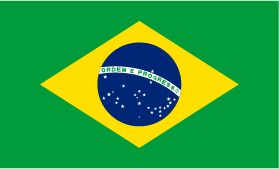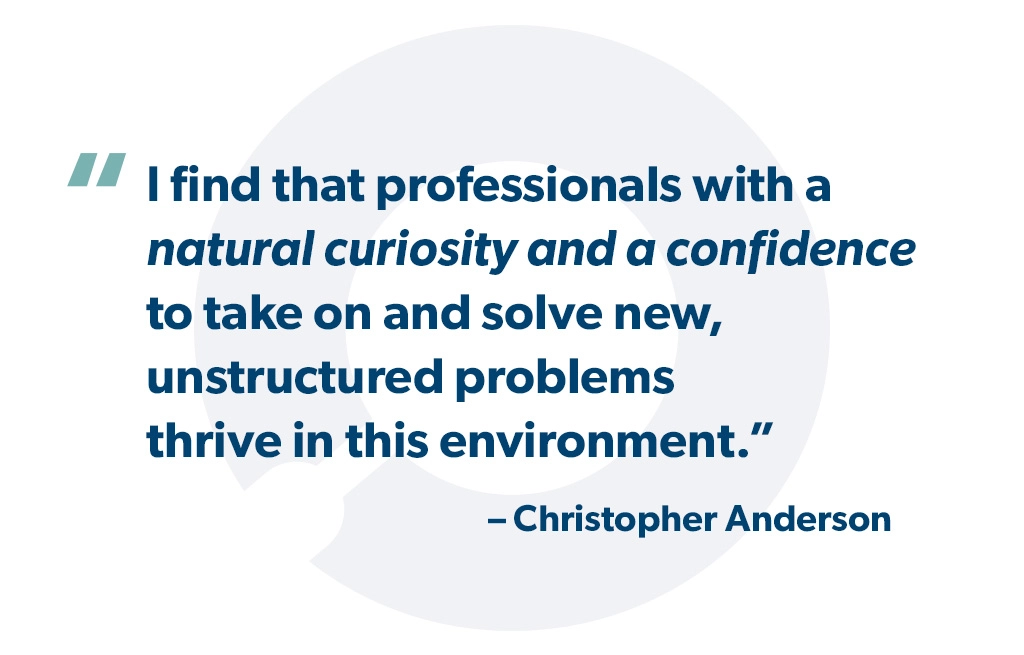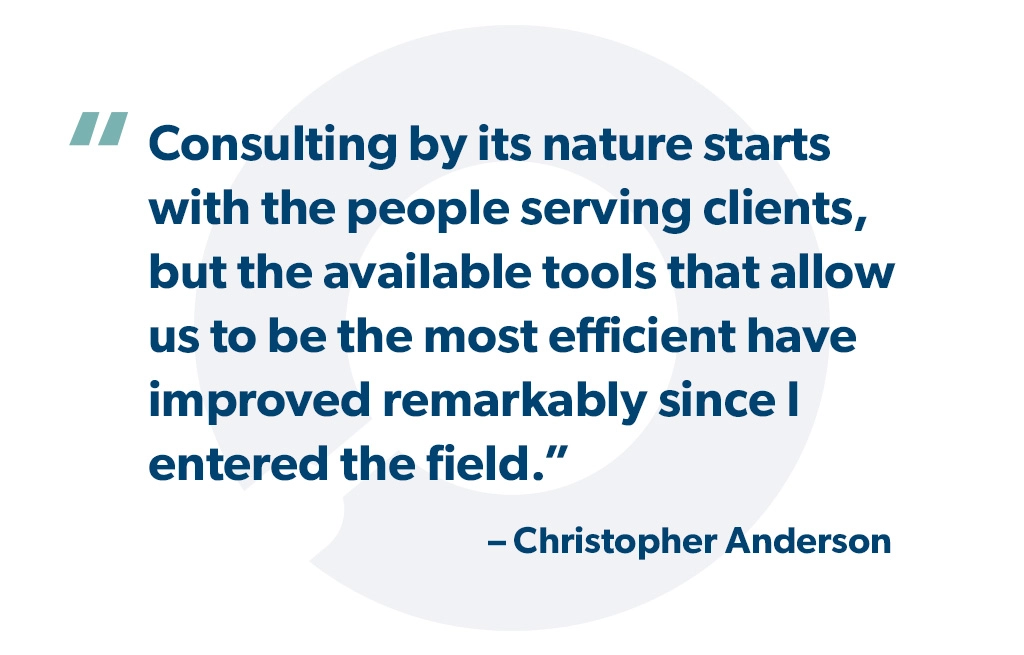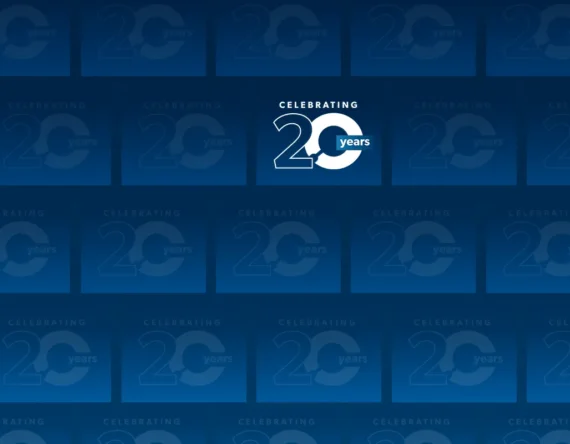To celebrate StoneTurn’s 20th Anniversary, we’re spotlighting our people. Meet Chris Anderson, Partner in Austin.
In this Q&A, Chris discusses what makes StoneTurn a unique place to work, how the IP damages field has changed over the last two decades, and what skills are needed to thrive as a consultant in the IP and damages world.
Culture
What drew you to StoneTurn?
I was drawn to StoneTurn in its infancy by the people I met and the promise of a consulting firm with an emphasis on and a commitment to a people first culture. What was clear to me at that time was that StoneTurn’s leadership had experience with firms that did not have this commitment and was setting out to set a new standard for what a client service firm should be. The firm’s commitment to this new standard has not wavered in the eighteen years since I joined.
Business
What are the critical skills for someone who wants to succeed in intellectual property disputes and damages?
The most critical traits that I see in people who succeed in IP damages are a natural curiosity to learn and a self-confidence that every problem has a solution. Most IP damages engagements require us to learn unfamiliar technologies and concepts and to make sense of unstructured problems. The framework for IP damages has been evolving for many years as the Courts address new questions, and these changes combined with the pace of technological change mean that quantifying IP damages is always evolving. As a consequence, many damages approaches that were common when I entered the field 20 years ago have been abandoned almost entirely, and with the pace of change in all areas of technology, the proliferation of new business models, and the globalization of supply chains, there is no shortage of new questions to be answered and new problems to be solved. I find that professionals with a natural curiosity and a confidence to take on and solve new, unstructured problems thrive in this environment.
What has been the biggest change in intellectual property over the last 20 years?
The biggest change in IP damages in the last 20 years has been the proliferation of damages-specific case law in all areas of IP. Damages approaches that were common and widely accepted when I started have been specifically criticized by Courts and, as a result, have been abandoned almost entirely by economic damages experts. Many of the changes have made quantifying IP damages more difficult, time consuming, and costly. These case law changes have also pushed damages to the forefront of many IP disputes, and the number and sophistication of challenges to damages methodologies have increased in turn.
Predictions For the Future
Where do you hope to see StoneTurn in 5 years?
I hope to see StoneTurn on the cutting edge of the consulting industry in 5 years. Consulting by its nature starts with the people serving clients, but the available tools that allow us to be the most efficient have improved remarkably since I entered the field. Twenty years ago, we took deliveries of file boxes full of paper documents, worked surrounded by these boxes, and waded through mountains of paper to identify and categorize relevant documents. Today, discovery is conducted almost exclusively through electronic media, our offices are free of file boxes, and identifying and categorizing documents is achieved using cloud storage and file management software. We also use advanced data analytics, document management, collaboration, and communications tools to manage our workflows more efficiently and effectively in ways that no one could have imagined twenty years ago. In five years, I would like to see that trend continue at StoneTurn as AI and other tools advance in ways that we may not foresee today.








